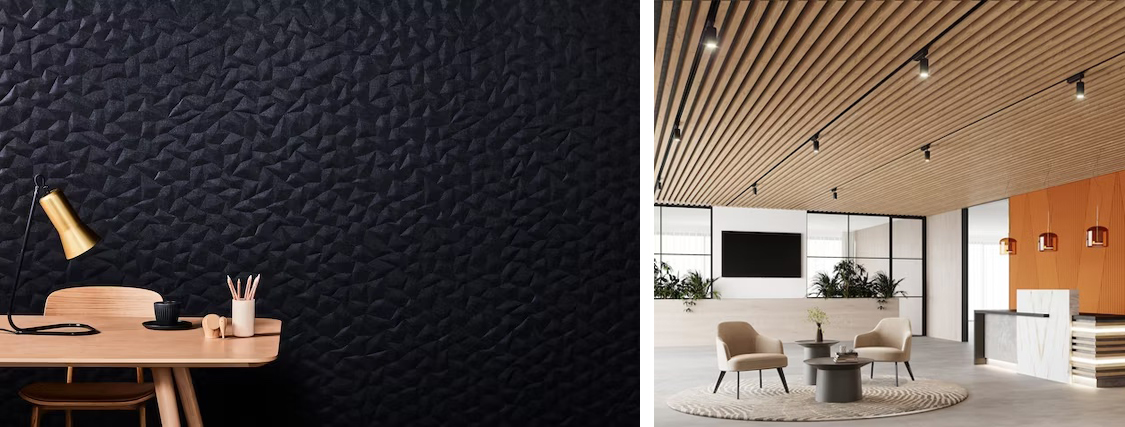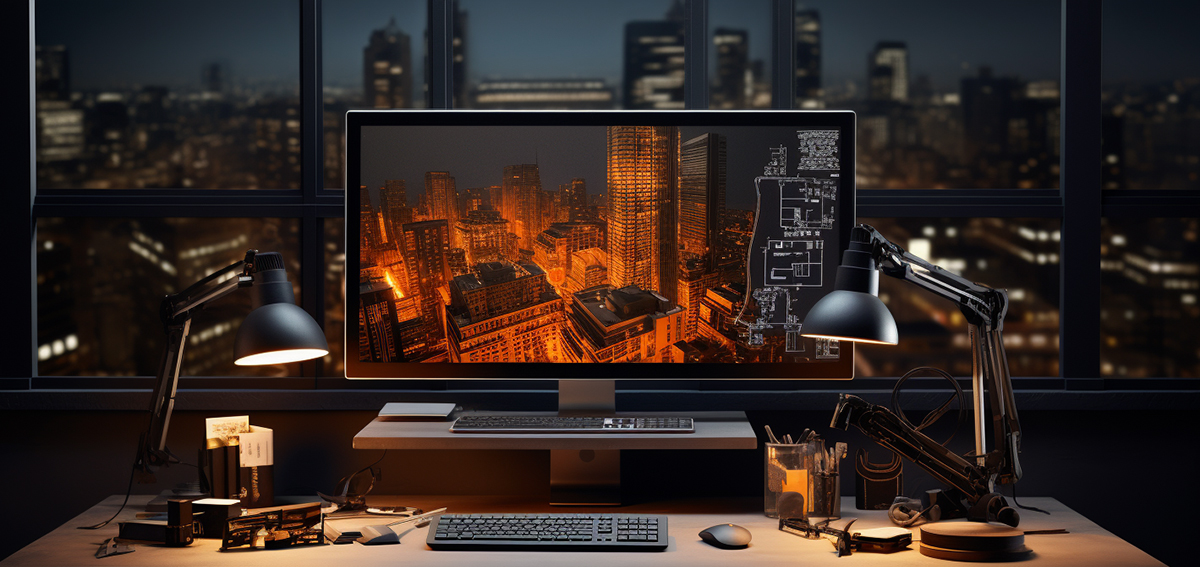One of the industry's biggest votes on design innovation is officially underway — help select the winners of the 2024 A+Product Awards! VOTE NOW >
The global workforce of today is more diverse than ever, and as such, the importance of crafting workplaces that cater to the unique and evolving needs of employees cannot be overstated. Architects, designers and manufacturers are leading the charge toward inclusivity in design, creating spaces that not only look great but also empower and accommodate their inhabitants. This shift towards inclusivity is driven by a deep understanding of the multifaceted needs of modern workers, who require spaces that are not only functional but also safe, creative and dynamic.
The traditional office has undergone a rapid transformation and, with it, workers’ needs. With the emergence of new technologies and innovations, a more mobile workforce, and a growing awareness of the importance of employee wellbeing, the modern workplace must be designed to cater to the vast and unique range of individual requirements.
Inclusivity in design is not just ethically commendable but also pragmatically essential. The workplace of tomorrow is being crafted today, and it is imperative that we design for the workforce we have and the workforce we aspire to create going forward. By creating spaces that encourage a varied, creative, fully engaged and safe workforce, we can embolden employees to be their best selves and truly thrive in their place of work.
Do you have an innovative product designed to contribute to the workplace of the future? If so, consider entering Architizer’s A+Product Awards:
Visual

Left: Symbols by Atelier Adam Nathaniel Furman. Finalist, 2021 A+Product Awards, Best in Specialization, Conceptual Design; Center: Inspired Connection by Patcraft. Winner, 2021 A+Product Awards, Flooring, Commercial & Residential Carpet; Right: SafeGlow by Accurate Lock and Hardware. Finalist, 2022 A+Product Awards, Best of the Year, Health & Wellness.
Designing for visual impairment is an exercise in empathy and innovation. It’s important to understand the world from a perspective where light, shadow, color and texture are experienced differently. Advances in tactile surfaces, braille-integrated signage, and audio-visual systems are about more than just compliance, they create an environment where vision is not a prerequisite for participation. By deftly considering contrast in color and texture, shape, thoughtful lighting and increased visibility designers can create a space is not just easily navigable but welcoming and safe.
Acoustics

Left: The Embossed Acoustic Panel Series by Woven Image. Winner, 2021 A+Product Awards, Finishes, Acoustics; Right: SoftenUp Ceiling System by Acoufelt. Winner, 2021 A+Product Awards, Finishes, Ceilings
Acoustics are commonly one of the most criticized issues in a workplace. Phone calls, machinery, and even just traveling conversations can make a poorly considered space a real challenge for those with hearing difficulties. The workplace can be an overwhelming cacophony or an isolating silence. Soundscaping in design now involves sophisticated sound absorption materials strategically placed to reduce noise pollution while enhancing clarity. With constant headphone use and, indeed, an aging workforce, hearing loss and reduction are real concerns for the future. Therefore, crafting an auditory environment with sonorous balance, enabling clear communication and reducing auditory stress is an essential target for the future of workplace design.
Mobility

Left: Radiant Wave Switch by Legrand. Finalist, 2022 A+Product Awards, Building Systems, Smart Design & Technology; Right: Single-track insulated Vitrocsa invisible frame by Vitrocsa. Winner, 2021 A+Product Awards, Best in Project Type, Commercial
When it comes to mobility, the modern workspace is becoming a place of unhindered movement. Mobility-focused design is a testament to the ethos of adaptability and accessibility. For wheelchair users or those with limited physical mobility, product designers are stepping up and ensuring they can help provide autonomy for workers with unique needs. From adjustable furniture to pathways that flow seamlessly, every element is an ode to unimpeded movement and welcomed independence.
Ergonomics

Lift: Liberty Ocean by Humanscale. Finalist, 2021 A+Product Awards, Best in Specialization, Sustainable Design; Right: LCS Table by Nienkamper. Finalist, 2021 A+Product Awards, Furnishings, Contract Furniture
As our workforce matures, ergonomic design is evolving to keep pace. Our increasingly sedentary lifestyles are set to create a myriad of issues in the future that it is vital we address now. Understanding that an aging workforce is not a challenging constraint but a valued aspect of diversity that provides unmatched experience is the first step in this process. By introducing intelligently designed furniture pieces that are individually adaptable and are designed having fully understood the mechanics of the human body helps to limit long-term physical challenges. Pieces that accommodate changing postures, aching backs, extended arm positions and lack of movement — these are the tools that will support a lifetime of expertise.
Neurodivergence

Right: ZITTO by Muraflex. Finalist, 2022 A+Product Awards, Furnishings, Furniture Systems; Left: BuzziNest by BuzziSpace. Finalist, 2021 A+Product Awards, Furnishings, Contract Furniture
Our understanding of neurodivergence is becoming more rounded every day, with many more people being recognized as having unique needs. In workplace design, this manifests in creating spaces that understand and respect the spectrum of cognitive experiences. It’s acknowledging that the brain’s wiring is as unique as a fingerprint. If we want to employ the most talented people in our industries, it is essential to design environments that cater to this diversity and make the office a welcoming and supportive place for all. Quiet corners for those who need to step away, sensory-friendly lighting for those who see the world in a different spectrum — each element is a step towards cognitive inclusivity.
Creativity

Right: Karim x Punto Collection by Karim Rashid Inc. Popular Choice, 2022 A+Product Awards, Furnishings, Outdoor Furniture; Left: Forsi by Keilhauer. Popular Choice, 2022 A+Product Awards, Furnishings, Contract Seating
As automated learning models evolve, mundane tasks are unlikely to be the job of the human worker. Without the need for data input or generation, it is creativity that will set the human apart from its AI counterpart. Fostering creativity in the workplace goes beyond providing tools; we must craft environments that inspire and support. Spaces that break the monotony, furniture that bends the norms –without rigidity, ideas flourish. It’s an acknowledgment that the best ideas often come from a place of comfort and freedom, and design is the key to unlocking the potential of the worker of the future.
Health

Left: GROHE Blue Pure New by Grohe. Finalist, 2022 A+Product Awards,Kitchen & Bath, Fixtures & Fittings – Kitchen; Right: Topos Upholstery with Supreen by Knoll. Winner, 2021 A+Product Awards, Furnishings, Fabric & Textiles
Health and well-being in our workplaces have been at the forefront of the minds of many for a number of years now, and design is playing a pivotal role. With innovations in prevention and cultural change, the market for products that make our workplaces healthier and safer is abundant. Materials that do more than endure; they protect. Air filtration systems that don’t just circulate air but purify it. Surfaces that resist microbes promote a culture of cleanliness. Touch-free technology that reduces the spread of bacteria. It’s a holistic approach to health that starts from the ground up, creating environments that care for their occupants as much as they inspire them.
One of the industry's biggest votes on design innovation is officially underway — help select the winners of the 2024 A+Product Awards! VOTE NOW >









